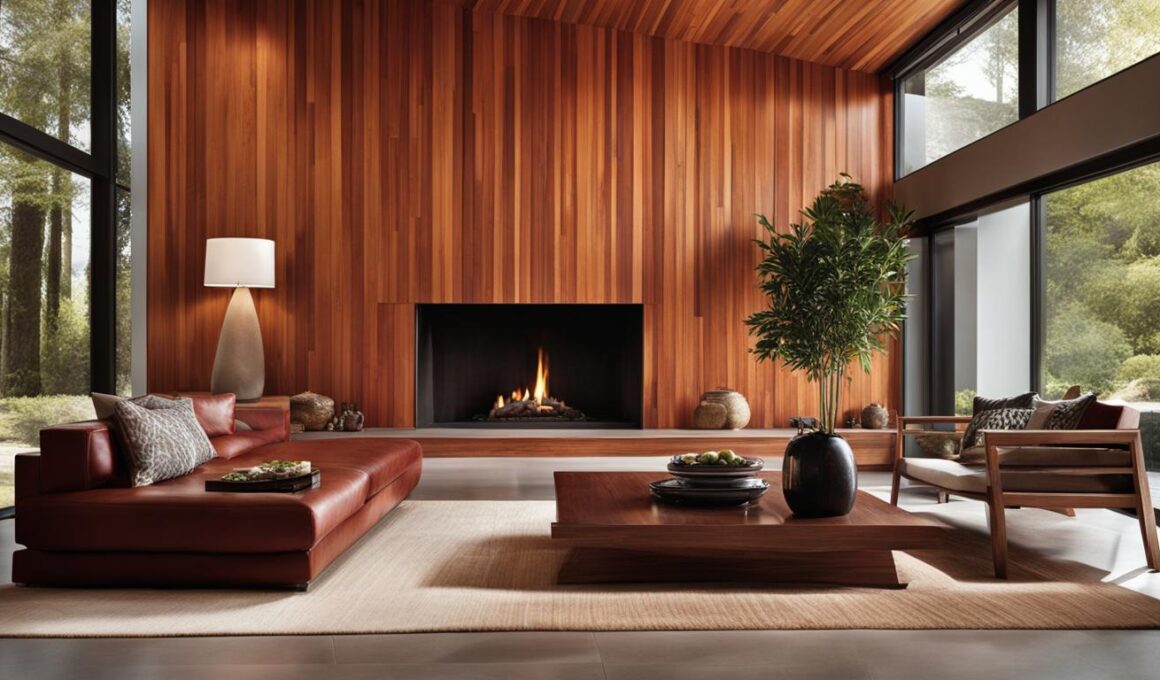Are you considering incorporating natural wood into your interior design? Red cedar and white cedar are two popular options known for their unique characteristics and aesthetic appeal. In this article, we will compare these two types of wood to help you make an informed decision for your interior applications.
When it comes to red cedar, durability and aesthetics are its standout features. This wood offers exceptional strength, making it perfect for high traffic areas in your home. With its reddish-brown hue, red cedar adds warmth and character to any space.
While red cedar is cost-effective compared to other wood choices, it’s important to note that it may require additional support in high traffic areas due to its softer nature. Additionally, red cedar’s natural oils can make painting more challenging.
On the other hand, white cedar is prized for its durability and visually appealing features. It boasts an impressive strength-to-weight ratio, making it ideal for interior walls and ceilings. The light, creamy tones of white cedar, along with its beautiful grain patterns, create a unique visual appeal in any space.
Although white cedar may be pricier than other wood options, its cost-effectiveness compared to premium materials makes it a worthwhile investment. Furthermore, white cedar is naturally resistant to insects and requires less maintenance, making it an excellent choice for interior applications.
When comparing red cedar and white cedar, it’s essential to consider factors such as cost, aesthetics, durability, and maintenance requirements. Both woods can be treated with stains or coatings for added protection against water damage.
In terms of environmental impact, red cedar is fast-growing and can be sustainably harvested from managed forests. White cedar, on the other hand, is native to North America and Europe.
By understanding the pros and cons of red cedar and white cedar, you can make an informed decision regarding which wood is best suited for your interior applications.
Pros and Cons of Red Cedar
When it comes to interior design applications, red cedar stands out for its aesthetic charm and robustness. This type of wood offers impressive durability and strength, making it an ideal choice for high traffic areas in your home. The reddish-brown color of red cedar adds warmth and character to any space, creating a visually appealing environment.
One of the major advantages of red cedar is its cost-effectiveness compared to other woods. While maintaining its quality and durability, red cedar proves to be a wise investment for homeowners looking to enhance their interiors without breaking the bank.
However, it’s important to consider a couple of aspects before choosing red cedar. In high traffic areas, red cedar may require additional support to ensure longevity and structural integrity. Additionally, the natural oils present in red cedar can make painting more challenging, which might affect your desired aesthetic if you wish to change the color of your interior surfaces.
Pros:
- Durability and strength for high traffic areas
- Warm and character-rich reddish-brown color
- Cost-effective compared to other woods
Cons:
- May require additional support in high traffic areas
- Natural oils make painting more difficult
Pros and Cons of White Cedar
When it comes to interior projects, white cedar is a popular choice, thanks to its attractive aesthetics and robustness. This versatile wood offers several advantages that make it ideal for various applications.
- Durability: White cedar boasts an impressive strength-to-weight ratio, making it a durable option for interior walls and ceilings. It can withstand daily wear and tear, ensuring longevity in high traffic areas.
- Aesthetics: The light, creamy tones of white cedar lend an elegant and inviting atmosphere to any space. Its beautiful grain patterns add a unique visual appeal, creating a warm and welcoming ambiance.
- Cost-effectiveness: While white cedar may be slightly more expensive than other wood options, its long-term cost-effectiveness outweighs the initial investment. Compared to pricier materials, such as exotic hardwoods, white cedar offers excellent value for money.
- Natural Resistance: One of the standout features of white cedar is its natural resistance to insects, including termites and decay-causing organisms. This characteristic ensures that your interior projects are protected without the need for additional chemical treatments.
- Low maintenance: White cedar requires minimal maintenance, saving you time and effort. Regular cleaning and occasional resealing are generally sufficient to keep the wood in optimal condition, making it a convenient choice for homeowners.
Overall, white cedar’s durability, aesthetics, cost-effectiveness, and low maintenance make it a practical and visually appealing option for your interior projects. Its strength and easy workability offer peace of mind, while its natural resistance to insects ensures long-lasting beauty within your home.
Conclusion
When choosing between red cedar and white cedar for interior applications, it’s important to consider their respective characteristics and advantages. Both types of wood offer durability, strength, and visual appeal.
Red cedar, with its reddish-brown color, is an excellent choice for high traffic areas due to its robustness. On the other hand, white cedar’s light golden hue makes it a popular option for full walls or ceilings, adding a touch of elegance to any space.
Both red cedar and white cedar can be treated with stains or coatings to protect against water damage, ensuring longevity. In terms of environmental impact, red cedar is fast-growing and can be sustainably harvested from managed forests. Meanwhile, white cedar is native to North America and Europe, making it a more localized and eco-friendly choice.
Ultimately, the decision between red cedar and white cedar will depend on factors such as cost, aesthetics, durability, and maintenance requirements. Consider your specific needs and preferences when making your selection, and enjoy the natural beauty and warmth that these woods can bring to your interior spaces.
Is Red Cedar or White Cedar Better for Burning as Firewood?
When it comes to choosing firewood, many people wonder if red cedar or white cedar is better for burning. Both types have their own benefits, but red cedar is often preferred for its higher heat output and aromatic qualities. However, mulberry firewood burning benefits are also worth considering for a clean and efficient burn.










